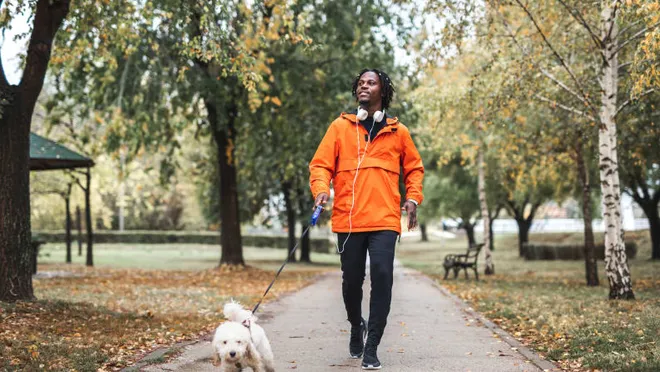A sedentary lifestyle is a habit that affects the appearance of chronic diseases, constitutes, after tobacco, the second risk factor for poor health. In Argentina, only half of the adult population performs physical activity regularly.
Exercising is essential to stay healthy and active. If you work all day and can’t find the time to do it… Don’t worry! Today there are exercise routines at home, so it is not mandatory to join a gym.
In addition, to stay in shape, it is not necessary to do a specific sport; something as simple as walking also has incredible health benefits. It is one of the best therapies for the prevention of cardiovascular diseases.
Walking is very beneficial for your health and 30 minutes a day is enough. It is a routine that significantly improves blood flow and blood pressure. In addition, it helps maintain weight and agility, strengthen the heart, prevent osteoporosis, and tone the body. In short, walking is one of the most complete and practical activities.
But don’t be careless, supplementing exercise with a good diet and healthy habits is also essential.
Benefits of physical activity
Depending on the duration and intensity of the exercise routines, physical activity produces muscular, circulatory, cellular and metabolic changes in the body.
At the beginning of exercise, the heart begins to accelerate at the cardiovascular level, improving the oxygenation of the body. In hypertensive people, specific exercise routines favour reducing blood pressure values while preventing diseases such as diabetes and collaborating in treatments by improving the insulin response. Also, aerobic routines improve cholesterol levels.
During training, the respiratory system is also strengthened, increasing the volume and lung capacity that, consequently, produces what is called “a ventilatory economy,” that is, the person breathes more efficiently than if he were sedentary.
Health benefits
STRENGTHEN THE HEART. Walking regularly reduces the risk of heart disease and stroke. It reduces LDL (bad) cholesterol levels and increases HDL levels (good cholesterol), and it keeps the blood pressure under control. Anything that increases the heart rate and promotes blood pumping is an exercise for the heart and circulatory system. Brisk walking for 30 minutes can help prevent and control high blood pressure, reducing the risk of cardiovascular accidents by up to 27 percent.
REDUCE THE RISK OF DISEASES. Walking can also reduce the risk of developing type 2 diabetes, asthma, and some cancers by up to 60 percent. Those who maintain a moderate activity level have about a 20 percent lower risk of developing colon, breast and uterine cancer.
KEEP WEIGHT LOW. Walking also increases muscle mass and tone.
HELP PREVENT DEMENTIA. Physical activity has a protective effect on brain function, and regular exercise reduces the risk of dementia by 40 percent.
IT HELPS PREVENT OSTEOPOROSIS. Stimulates and tbones, increasing density. It also helps maintain joint health by helping to prevent diseases such as osteoarthritis.
TONES LEGS, BUTTOCKS AND ABDOMINALS. A good walk can help strengthen and shape the legs, giving definition to the calves, quads and hamstrings and lifting the glutes. If you pay attention to posture while walking, you can tone your abs and gradually reduce your waistline.
TONES YOUR ARMS. Walking speed comes from the arms. To get the best benefit, you should keep them at a comfortable level, bent at the elbow, and move them back and forth as you walk. Moving them faster allows us to speed up the pace automatically. This movement tones the arms, shoulders, and back.
INCREASES VITAMIN D LEVELS. Walking in daylight increases the body’s vitamin D levels – a nutrient that is difficult to obtain from food but can be synthesized through exposure to sunlight. Vitamin D plays a massive role in many ways, from bone health to immune system health.
RISE THE LEVELS OF ENERGY. It may seem like a paradox, but a good walk is one of the best natural energizers at our disposal. Walking increases circulation and increases oxygen supply to every cell in the body, helping you feel more alert and alive. It also releases stiffness in the joints and relieves muscle tension.

